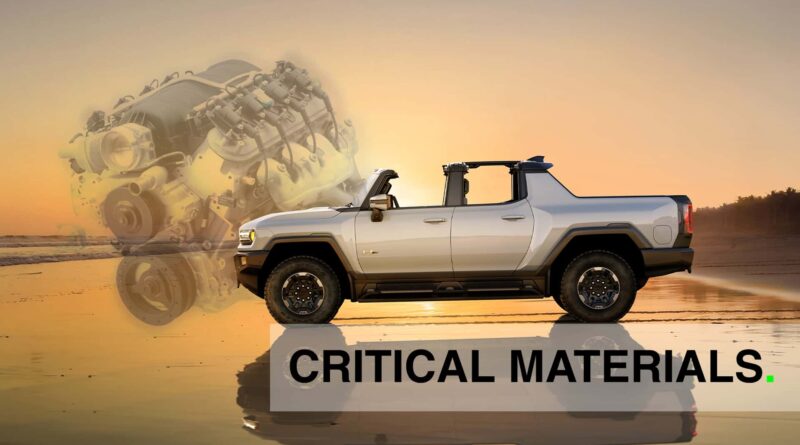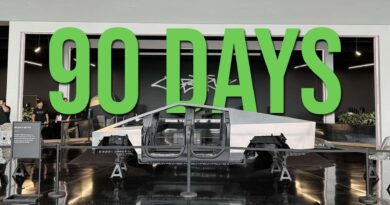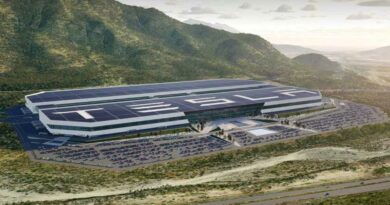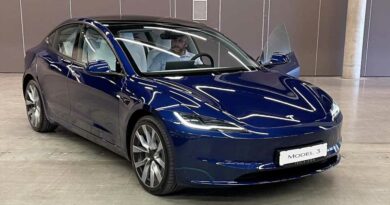Yes, General Motors Still Plans To Go All-Electric
It’s another beautiful, fully-charged day here at InsideEVs and, for some reason, Patrick George has entrusted me with the keys to Critical Materials—the daily roundup of electrification and tech that makes the world go ’round.
We’ve got a lot on the menu to chat about today. First in the spotlight is General Motors, specifically the automaker’s re-affirmation of it ending sales of the combustion engine, plus its self-driving arm, Cruise, axing nine executives.
We’re also going to touch on just how Tesla’s Autopilot recall is being received by critics. Buckle up.
30%: General Motors Still on Track to End Gas-Powered Car Sales by 2035
Automakers across the globe are digging their heels to slow the production of EVs. Depending on who you ask, demand for battery-powered cars has slowed in recent months, though a number of factors could be at play there instead. Regardless, this supposed temporary setback won’t keep GM from hitting its goal of moving to all-electric vehicle sales by 2035.
“Our plan is to only be selling EVs, light-duty EVs at that time,” GM CEO Mary Barra reaffirmed during a talk at the Washington Economic Club on Wednesday. “But of course, we’re going to be responsive to where the customer is at, but we have a plan to do that.”
Along with its third-quarter earnings report, GM recently announced that it would delay production of the Chevy Equinox, Silverado EV, and GMC Sierra Denali EV by “just a few months.” It also announced that it would delay starting up EV truck production at its Orion plant until late 2025, which meant scrapping a short-term goal of building 400,000 EVs through mid-2024.
And, in a surprise move, the automaker also cancelled its plans to collaboratively develop affordable BEVs with Honda.
All of that being said, is a decade enough time for GM to completely transition consumers to a new power plant? Keep in mind that this may very well mean revamping the dealership and service models, plus dealing with global shortages as other automakers attempt to make the same switch.
60%: Cruise Dismisses 9 Executives Following Safety Probe
Speaking of GM, somebody needs to check on its autonomous robotaxi division, because things there don’t exactly seem to be going so well lately.
Following the suspension of its driverless operating permit in California, the halting of production for the Cruise Origin by GM, and a number of safety incidents over the past few months, Cruise has been the subject of an ongoing safety investigation. Cruise’s own board has even hired an external law firm to conduct a review into how it responded
at probe appears to have shaken things up quite a bit, especially the departure of both of Cruise’s co-founders—CEO Kyle Vogt and chief product officer Dan Kan.
Reuters recently published excerpts from an internal Cruise memo highlighting the changes
Following an initial analysis of the October 2 incident and Cruise’s response to it, nine individuals departed Cruise.
We are committed to full transparency and are focused on rebuilding trust and operating with the highest standards when it comes to safety, integrity, and accountability.
As a result, we believe that new leadership is necessary to achieve these goals.
Among those dismissed were also Chief Legal and Policy Officer, Jeff Bleich, and Senior Vice President of Government Affairs, David Estrada.
Cruise now has an uphill battle. It could be facing fines of up to $1.5 million, pending the outcome of regulator probes, plus additional sanctions. On top of all of its legal and monetary issues, the robotaxi service now also has the tough job of building back the public’s trust lost over the past year.
90%: Tesla’s Recall Over Autopilot Attentiveness Doesn’t Go Far Enough: Critics
ICYMI: Tesla has decided to voluntarily recall more than 2 million vehicles—that’s nearly every vehicle it has sold in the U.S. in recent years—to put an investigation being conducted by the National Highway Traffic Safety Administration to bed.
NHTSA has been investigating Tesla’s driver assistance software suite, namely Autopilot, for more than two years.
It appears that Tesla’s fix, among a lengthy list of checks, will be to suspend a driver from using Autopilot’s Autosteer functionality, similar to how Full Self-Driving beta will put drivers in time-out for a week if they ignore prompts.
Depending on vehicle hardware, the additional controls will include, among others, increasing the prominence of visual alerts on the user interface, simplifying engagement and disengagement of Autosteer, additional checks upon engaging Autosteer and while using the feature outside controlled access highways and when approaching traffic controls and eventual suspension from Autosteer use if the driver repeatedly fails to demonstrate continuous and sustained driving responsibility while the feature is engaged.
“It’s a good initial step, but there’s a lot that still needs to be done,” said Missy Cummings, the director of the Autonomy and Robotics Center at George Mason University. Cummings also noted that Autopilot should be restricted to only areas that it is designed for, and restricting access to the system on city streets.
Cummings was formerly appointed to be the senior adviser for safety at NHTSA. She has been an outspoken critic about Autopilot in the past, leading to a bit of a rocky road with Tesla fans, stans, and Elon Musk himself. She was eventually asked to recuse herself from Tesla-related matters.
“Tesla should have launched a broad recall for Autopilot at least five years ago, and delays like this are unacceptable,” said William Wallace, associate director of safety policy at Consumer Reports, in a statement to Bloomberg. “We credit NHTSA for its perseverance, but it’s clear the agency needs a greater practical ability to force recalls when a company drags its feet.”
Drivers have seen the writing on the walls for a while. Personally, I feel that the driver monitoring system of the Model 3 can be very polarizing. Sometimes, I can drive for half an hour without nag, others, I’m nagged every 15 seconds—and yes, that’s with hands on the wheel. And it can take a good shake to have the car recognize that you’re putting torque on the wheel.
100%: Is Tesla’s Autopilot Recall Fix The Right Call?
Autopilot, including its more feature-robust Full Self-Driving software, has always been a Level 2 driver assistance system. Tesla has been vocal about this, plastering it in vehicle manuals and on its website, though its choice of branding has drawn the attention of the California DMV.
To calm NHTSA’s investigation, Tesla has agreed to implement certain bolstered safeguards around its driver monitoring. However, a suspension from using Autosteer could draw up a number of complaints from consumers who experience a high number of false-positive interactions with Autopilot nag.
Is restricting the use of a feature already present on the vehicle the right way to approach this issue? Or would you be upset if a feature had restrictions placed on it that were not present while when you ordered it?
I’m not sure what the happy medium is here, especially with safety in mind, but Tesla seems to be stuck between a rock and a regulatory body.
Source: Read Full Article




